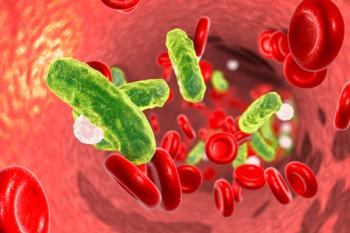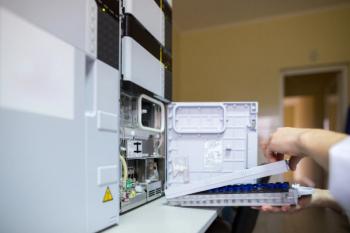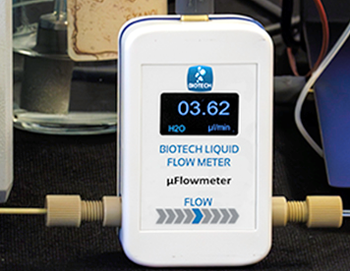
Efficient Separation with Novel 3D Fluorinated Covalent Organic Frameworks
Researchers investigated a three-dimensional fluorinated covalent organic framework (3D-FCOF) as a stationary phase in capillary electrochromatography.
A recent study published in the Journal of Chromatography A shows how researchers introduced a new three-dimensional fluorinated covalent organic framework (3D FCOF), JUC-515, as a stationary phase in capillary electrochromatography (1). This framework resulted in the fluoroqinolones (FQs) having better separation capabilities.
The research team used tetra (4-aminophenyl)methane (TAM) and 2,3,5,6-tetrafluoroterephthalol (TFA) to synthesize JUC-515, which was subsequently coated onto the inner walls of a capillary column using chemical bonding (1). Comprehensive characterization confirmed the successful synthesis and integration of JUC-515 into the capillary column (1).
The researchers also investigated the impact of buffer solution concentration, organic additive content, and buffer solution pH on the separation efficiency of fluoroquinolones. This part of their study was designed to see if the JUC-515-coated capillary column exhibited resolution and reproducibility. The research team determined that this column did exhibit great resolution (>1.5). They also observed low relative standard deviations (RSDs) for various parameters, including retention time and peak area, demonstrating the high precision of the separation technique (1). The RSDs for intraday, interday, column-to-column, and interbatch precision were all found to be under 3.32% (1).
The researchers also demonstrated the longevity of the JUC-515-coated capillary column, as it maintained its separation performance after being used for more than 150 cycles (1).
One of the key aspects of this study was the elucidation of the separation mechanism based on fluorine interactions. By separating fluorinated β-phenylalanine analogs, β-phenylalanine, and trifluoromethyl β-phenylalanine analogs, the researchers provided insights into the role of fluorine interactions in the separation process (1). This understanding contributes to the broader knowledge of chromatographic separation mechanisms.
Reference
(1) Yin, H.; Zhen, Z.; Ning, W.; et al. Three-dimensional fluorinated covalent organic frameworks coated capillary for the separation of fluoroquinolones by capillary electrochromatography. J. Chromatogr. A. 2023, 1706, 464234. DOI:
Newsletter
Join the global community of analytical scientists who trust LCGC for insights on the latest techniques, trends, and expert solutions in chromatography.




